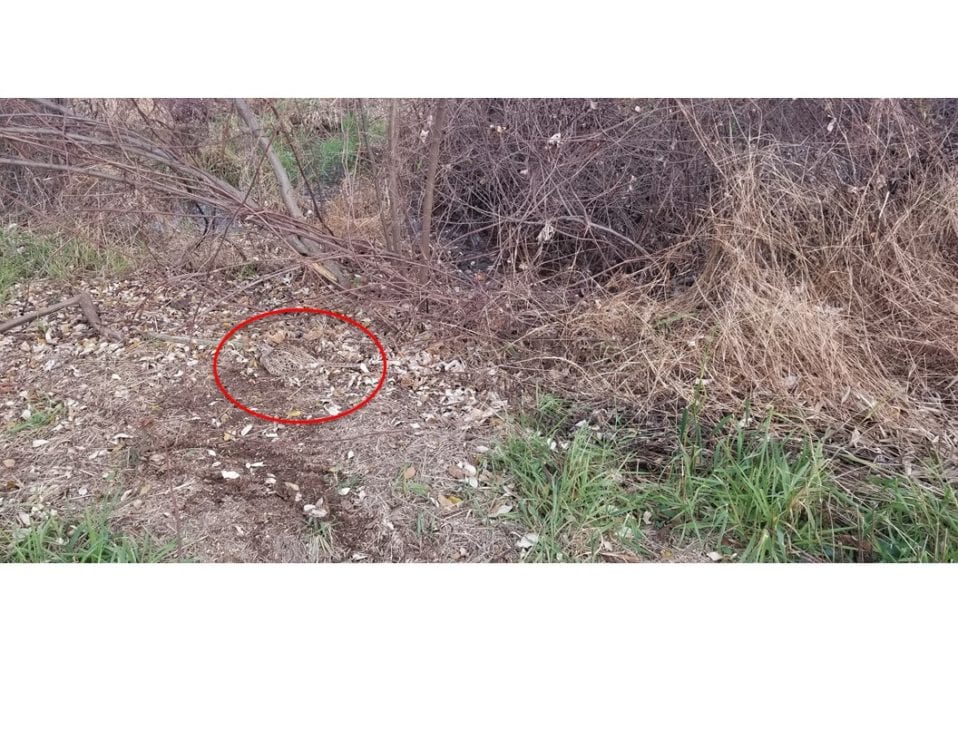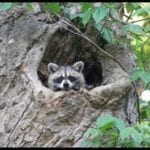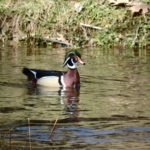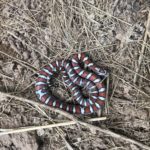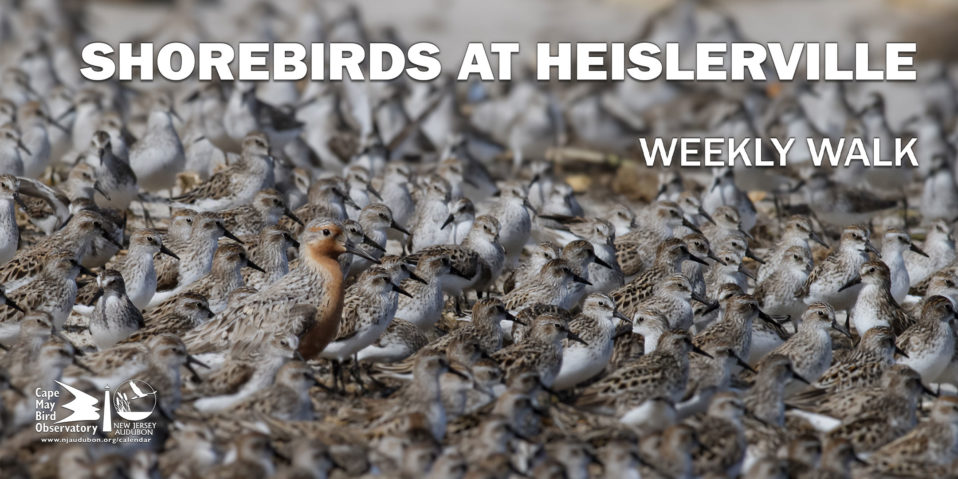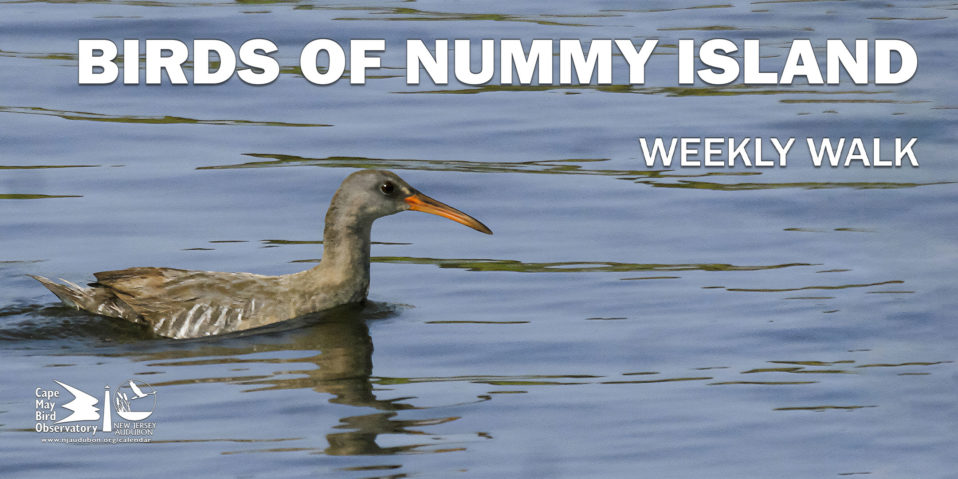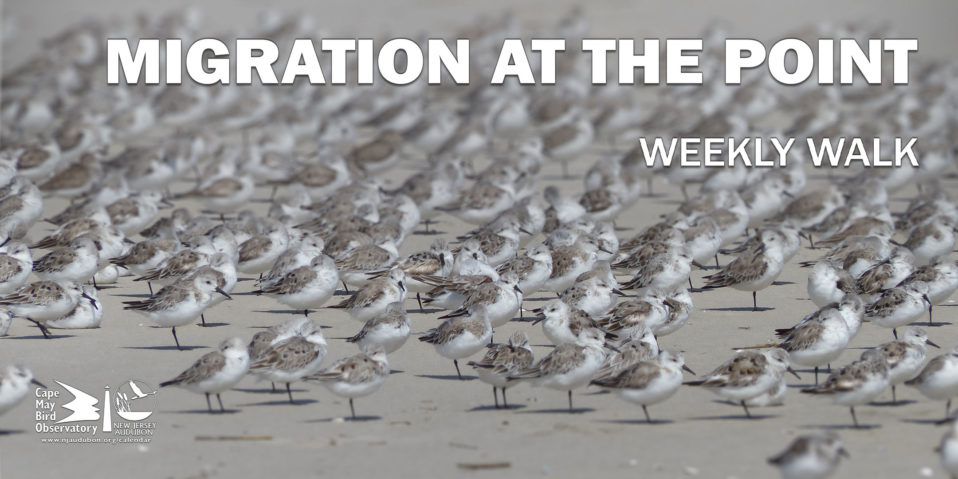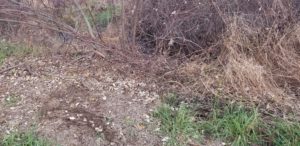
Female Ring-necked Pheasant lies hidden in the grass (Look towards left side of photo) – Photo by John Parke
Walking through a field with my Dad at the Flat Brook Wildlife Management Area in Sussex County, I paused to look at a plant that I did not recognize. As I examined the leaves of the plant, I suddenly realized that I too was being examined. A female Ring-necked Pheasant only inches away was staring up at me as she laid perfectly still among the grasses.
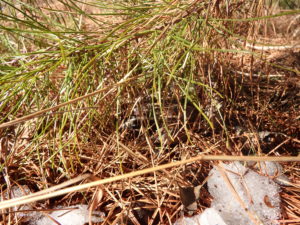
A male Northern Bobwhite Quail (center of photo) hidden in the grasses in the NJ Pinelands. Photo by John Parke
In nature it is all about survival of the species, any kind of advantage that can increase survival ultimately becomes key to that species’ chance of successful reproduction to perpetuate the species. Animals have evolved many adaptations that help them find food or keep them from becoming food.
Natural camouflage is one of the most diverse and widespread ways that an animal can conceal itself from predators or prey. Using body position, texture, colors and patterns on their bodies, animals blend into their environments almost giving them the gift of invisibility.
There are four basic types of camouflage:
- Concealing Coloration: The animal can hide itself against a background of the same colors. A classic example is
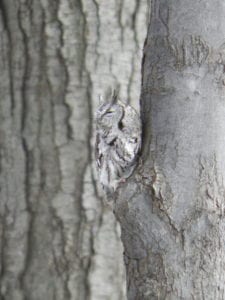
An Eastern Screech Owl sits silently amongst the trees (Note this is a close up of the same owl in the banner photo of this blog). Photo by John Parke
the Snowshoe Hare in winter, hidden against the snow.
- Disruptive Coloration: The patterns on the animal make it hard to see the outline of its body or when grouped together with animals of the same species the animal looks bigger than what it really is. Examples include flocks of birds and schools of fish.
- Disguise: Although this is a lot like concealing coloration, the exception is the animal blends in with its surroundings by its shape or the texture of its body covering. Examples include Stonefish that look like a rock or a Least Bittern that when alarmed will freeze in place with its body stretched out, bill pointing up and swaying to resemble windblown marsh vegetation.
- Mimicry: This includes animals that are imposters of other animals and by doing so are mistaken for the real animal that is typically avoided by others. Classic examples include the Viceroy Butterflies (impersonating the unpalatable Monarch), Scarlet King Snake, (impersonating the venomous Coral Snake), or the Hoverfly (impersonating a stinging wasp).
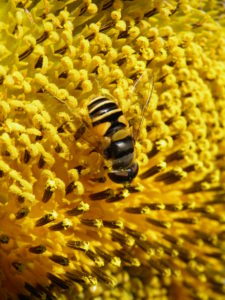
A Hover Fly is left alone from predators as it resembles a Yellow-Jacket Wasp while gathering pollen from a sunflower. Photo by John Parke
Remember, birding, wildlife watching and spending time outdoors helps build your powers of observation and refine your ability to pay attention to detail. The more you get outside the better you become at recognizing the world around you. So, get out there, pay attention to detail and look close at not just the animal, but the habitat and cover too, because you never know what else might be inches away, watching you!
Have some good animal camo photos you took in the field, send them to us and we will post a few! Send to [email protected]




